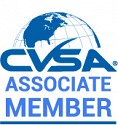Ontario Studies Northern Parking Situation
OTTAWA, Ont. – The Government of Ontario is looking for feedback into ways
to expand and improve rest stops and roadside pulls-offs in Northern Ontario
over the next 25 years.
The Ontario Ministry of Transportation (MTO) and the Ministry of Northern
Development and Mines (MNDM) have released a “Draft 2041 Northern Ontario
Multimodal Transportation Strategy,” which outlines a vision, goals and
directions to address challenges that are unique to northern Ontario. As it
concerns the trucking industry, the draft specifically outlines proposed rest
areas in need of improvement.
The strategy acknowledges there are long stretches along the TransCanada Highway in northern Ontario with no year-round rest areas that provide basic amenities to travellers, including commercial vehicles and passenger buses who must comply with federal HOS regulations.
The MTO has named three rest areas as priority areas for improvement:
The strategy acknowledges there are long stretches along the TransCanada Highway in northern Ontario with no year-round rest areas that provide basic amenities to travellers, including commercial vehicles and passenger buses who must comply with federal HOS regulations.
The MTO has named three rest areas as priority areas for improvement:
•Highway 17, 1.3 km east of the Ontario-Manitoba Border
•Highway 11, 8.0 km east of Hwy 663 (west of Hearst)
•Highway 144, at junction with Highway 560 (Watershed)
According to the action plan, these rest areas will be improved upon by the MTO and MNDM with help from municipal and private sector partners to “strategically address gaps in fuel service station locations along the TransCanada Highway.” As well, local businesses will be encouraged to “explore opportunities for improving or extending existing services and amenities that can improve the driving experience of motorists.”
If you’re interested, you can find the draft strategy and the executive summary, as well as other background documents, here.
According to the action plan, these rest areas will be improved upon by the MTO and MNDM with help from municipal and private sector partners to “strategically address gaps in fuel service station locations along the TransCanada Highway.” As well, local businesses will be encouraged to “explore opportunities for improving or extending existing services and amenities that can improve the driving experience of motorists.”
If you’re interested, you can find the draft strategy and the executive summary, as well as other background documents, here.







